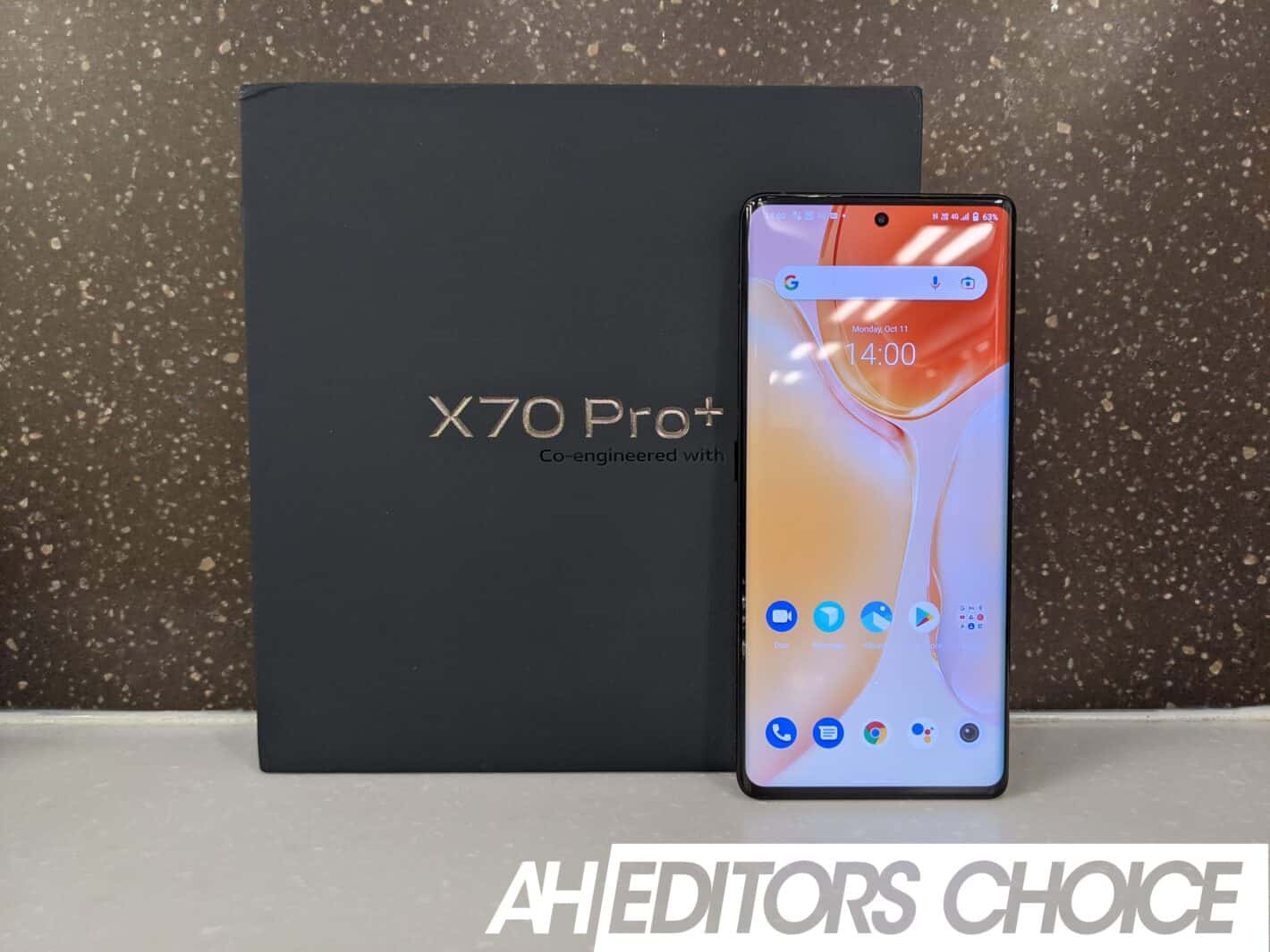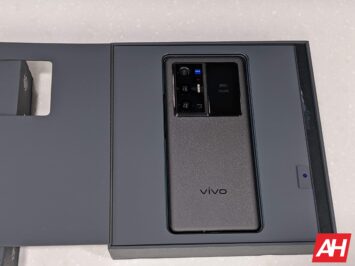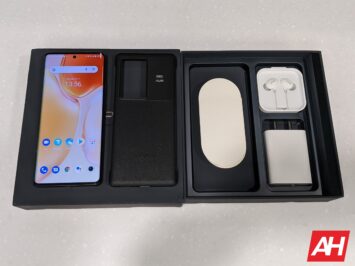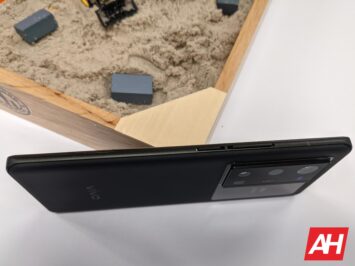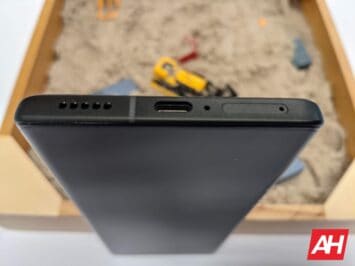The Vivo X70 Pro Plus is leaps and bounds better than its predecessor from 6 months ago. We reviewed the X60 Pro+ in April 2021 and had lots of nice things to say about it.
Seems like Vivo paid attention to all the major gripes that we had with the X60 Pro+ and fixed them all en masse. Initial impressions are that the Vivo X70 Pro+ is a much better all round flagship compared to the previous version. So let’s get the unboxing done to see how much improvement Vivo has made in a short span of 6 months.
Unboxing the Vivo X70 Pro Plus
The packaging is still square but we get a plain black box with the branding moved into the center compared to the previous version. Also I noticed right away that the box was a bit thicker.
Upon opening the box I realized why this was the case. The phone now sits in the middle with a cutout showing off the upgraded rear camera module. Flip the “Photography Redefined” cutout and you can see the Enigma Black review model sitting rear side up. Underneath this insert is a vegan leather case, 66W fast charging brick, USB-C cable, earphones, headphone jack dongle, and SIM tool. As usual, the phone has a factory-applied film screen protector on it.
Vivo X70 Pro Plus design language is elegant and premium simultaneously

I was a big fan of the hardware design of the Vivo X60 Pro+. But I must say that Vivo has again managed to create a stunningly unique smartphone in terms of hardware design. The screen is now slightly larger so the overall size of the phone is bigger. I think Vivo is trying to create some distance between the Pro+ and Pro models of the X70 series smartphones.
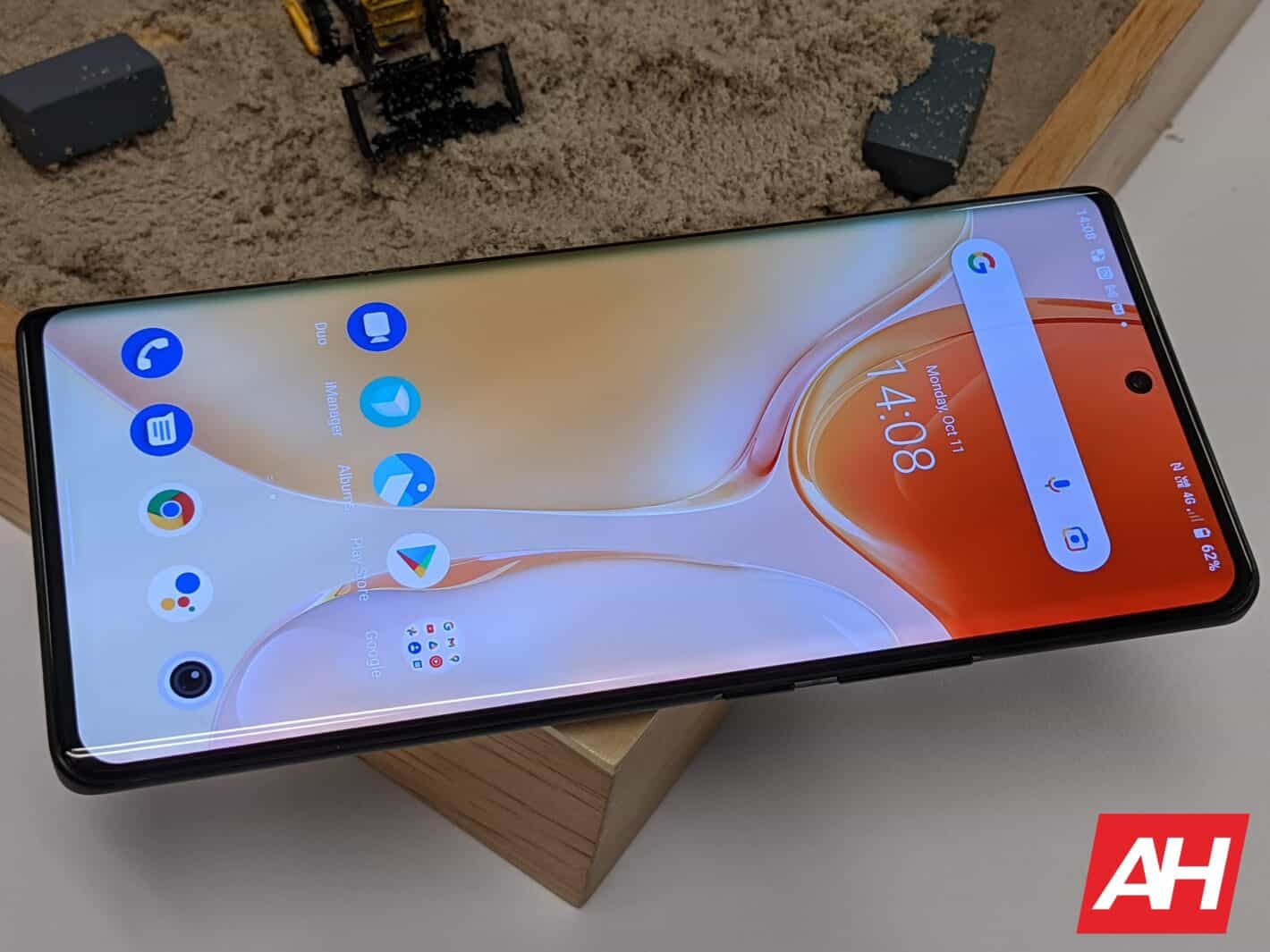
The attention to detail is impeccable. You can see that in the uniform curved side rails which ensure an absolutely seamless transition from screen to back cover. Not to mention the ultra-tight tolerances on the components resulting in a very polished and premium-looking device. The in-hand ergonomics are excellent in terms of weight distribution despite the phone growing larger in size when compared to the previous version.
The front design language is still similar to the Galaxy S series or OnePlus Pro series of devices. With curved glass on either side and a small center hole punch for the selfie camera. The power button is still textured but because of the black color it is a bit difficult to photograph. You can definitely get tactile feedback when you brush your fingers against it though. Both power and volume rocker buttons has satisfying clicks to them.

The rest of the design language is unaltered. On the top, we get a microphone and a ‘Professional Photography’ logo. The left-hand side rail is clean and on the bottom rail are the SIM tray, USB-C port, and speaker grille.
Lots of changes on the rear of the smartphone starting with the camera module
Vivo is trying to position their top-end X series as cameras that have a smartphone attached to them. To this effect, there is a new upgraded quad-camera module on the back. If you thought that the X60 Pro+ camera module was big, I think you are in for a surprise this time around.
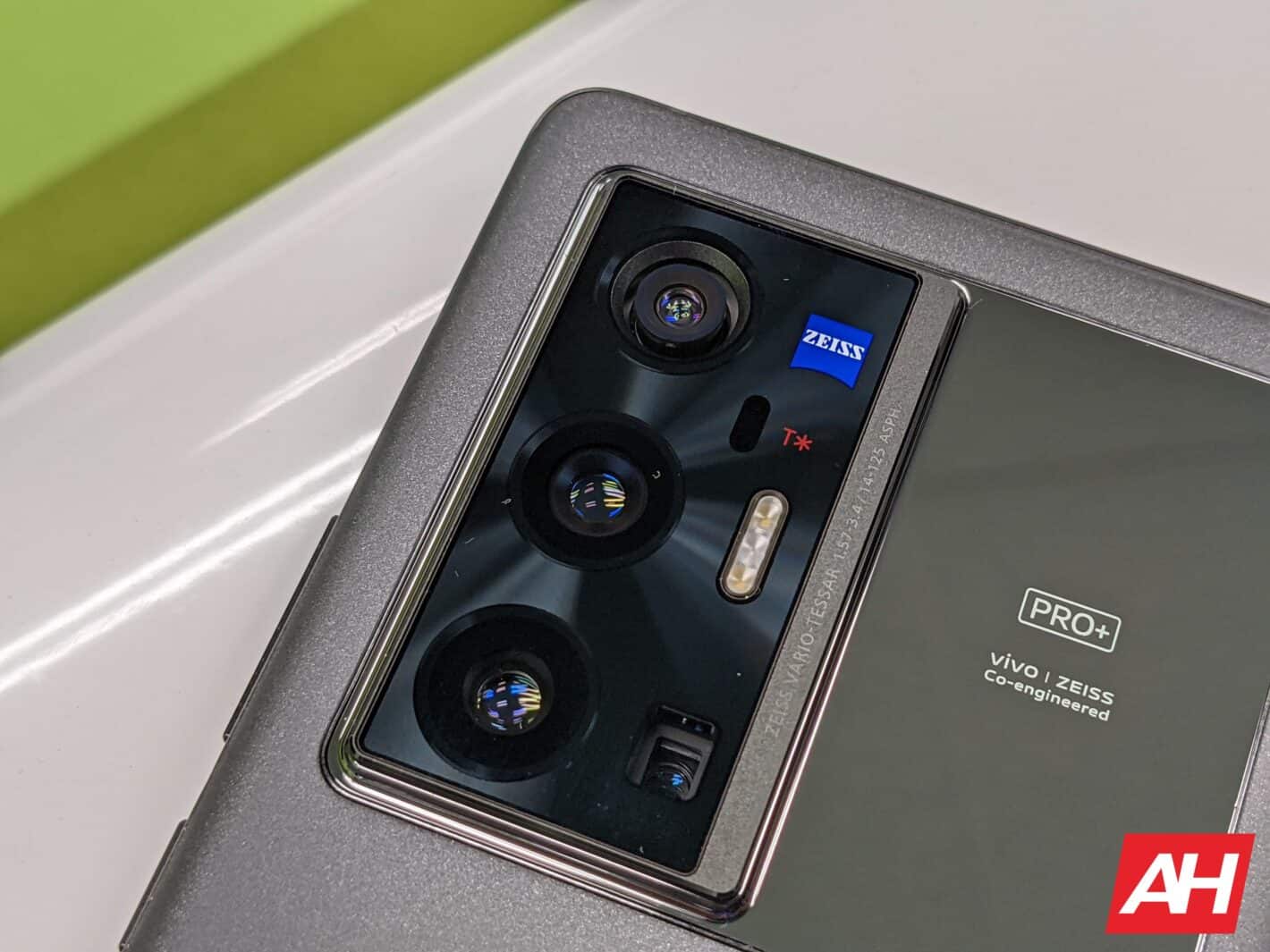
The quad-camera module is housed on the left side but is mounted on a larger rectangular plate. Size-wise this layout looks like Mi 11 Ultra minus the rear screen. Overall I think that the camera module layout gives the X70 Pro+ a very unique and elegant look. One thing Vivo wasn’t able to improve is the massive amount of wobble on a flat surface. This problem persists regardless of whether you use the phone with or without the OEM case.
My review unit is Enigma Black and has a textured surface on the back glass that resists fingerprints quite well. Personally, I would still have preferred a vegan leather option as a review unit but I digress. The Vivo branding on the back also blends in nicely on this black version – muted and elegant, which seems to be a theme with this entire smartphone hardware design.
Before I forget, the Vivo X70 Pro+ finally gets an IP68 rating for dust and water resistance which is great news. The haptic motor also seems to be slightly better than the previous version.
In summary, I think Vivo has made a lot of right improvements in terms of overall hardware design including IP rating, larger screen, fingerprint resistance back, and a unique camera module layout. I wish they would have found a way to fix the camera wobble. But that is a complaint most reviewers have with pretty much every high-end smartphone, so I think we can give Vivo a pass. From a hardware design language perspective I think the Vivo X70 Pro+ can easily compete with the top-end offerings from Xiaomi, Samsung, and OnePlus.
Bigger, Better AMOLED Display on the Vivo X70 Pro Plus
The Vivo X70 Pro+ sports a big 6.78″ LTPO AMOLED screen with good color accuracy. The curved screen also has plenty of brightness regardless of lighting conditions. It has a Quad-HD+ resolution (3,200×1,440 pixels) which results in a 517 ppi pixel density.
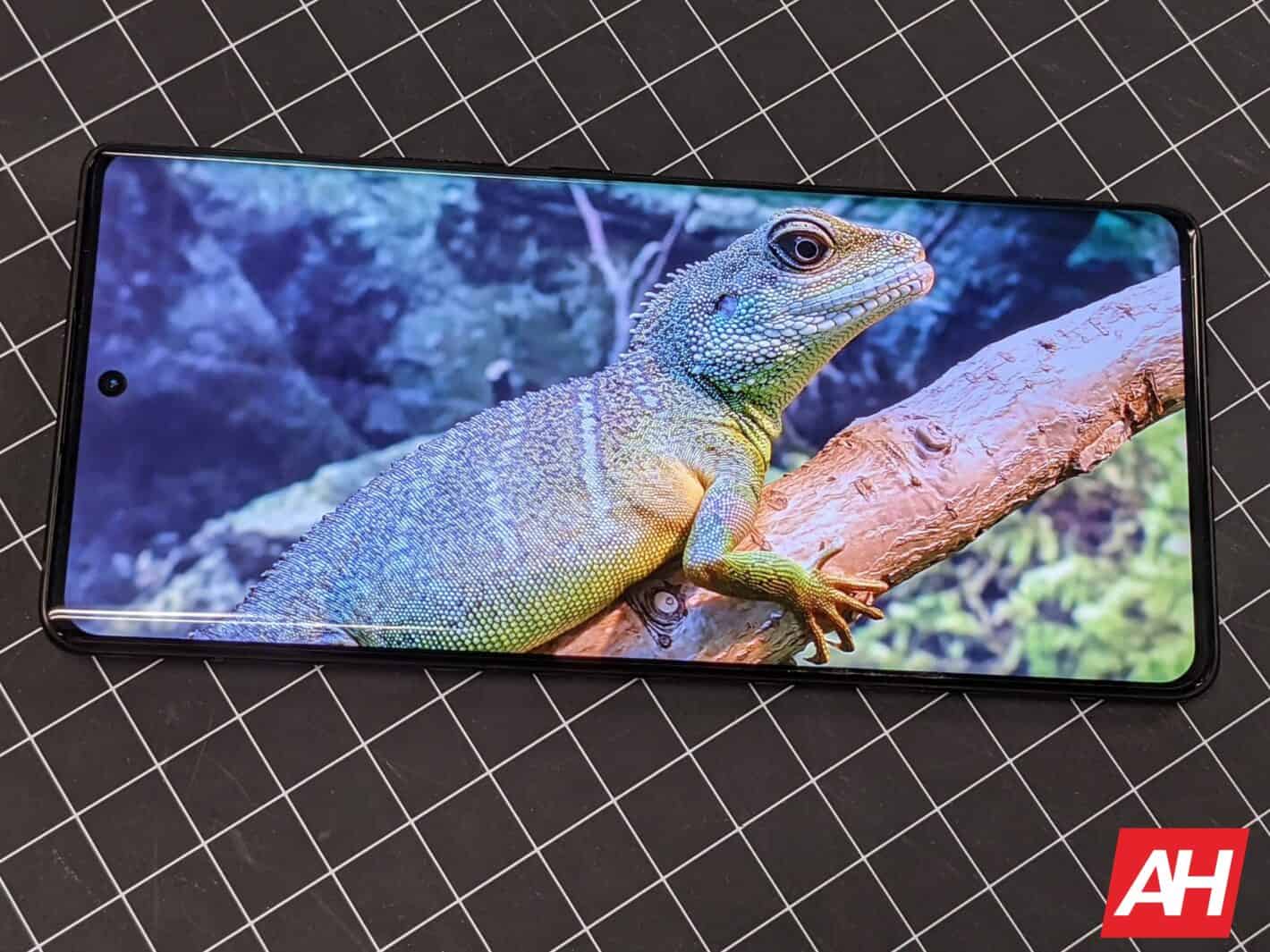
The 3D curved glass and very tiny bezels all around mean a 90.1% screen-to-body ratio which is one of the highest in recent times. There is also 10-Bit color support along with HDR10+ so watching videos or playing games is a joy on the large display with a small center hole punch.
Refresh rate on the screen is 120Hz but due to the LTPO screen, the display dynamically shifts between refresh rates depending on what type of content is being consumed. This is something you see in high-end devices from Samsung, OnePlus, and Apple. So it is nice to see it in the Vivo X70 Pro+. So despite having a larger higher resolution display the battery life is surprisingly decent due to the LTPO display panel.
Vivo kept all the customization options from the previous version with this new display panel. So you still have multiple options in terms of ambient light effect or unlock and fingerprint animations. Just go to the Settings menu to the Dynamic effects setting and you can spend a lot of time trying to tweak these customization settings to suit something to your taste.
While we are on the subject of customization, you can tweak color temperature, and color mode in the Display settings as well. To reduce eye strain you get the standard blue light filter (eye protection), and adaptive brightness along with dark theme setting options. The screen is a huge update over the predecessor and the overall execution is flagship-grade.
Performance is top tier with the Snapdragon 888+ and 12GB RAM
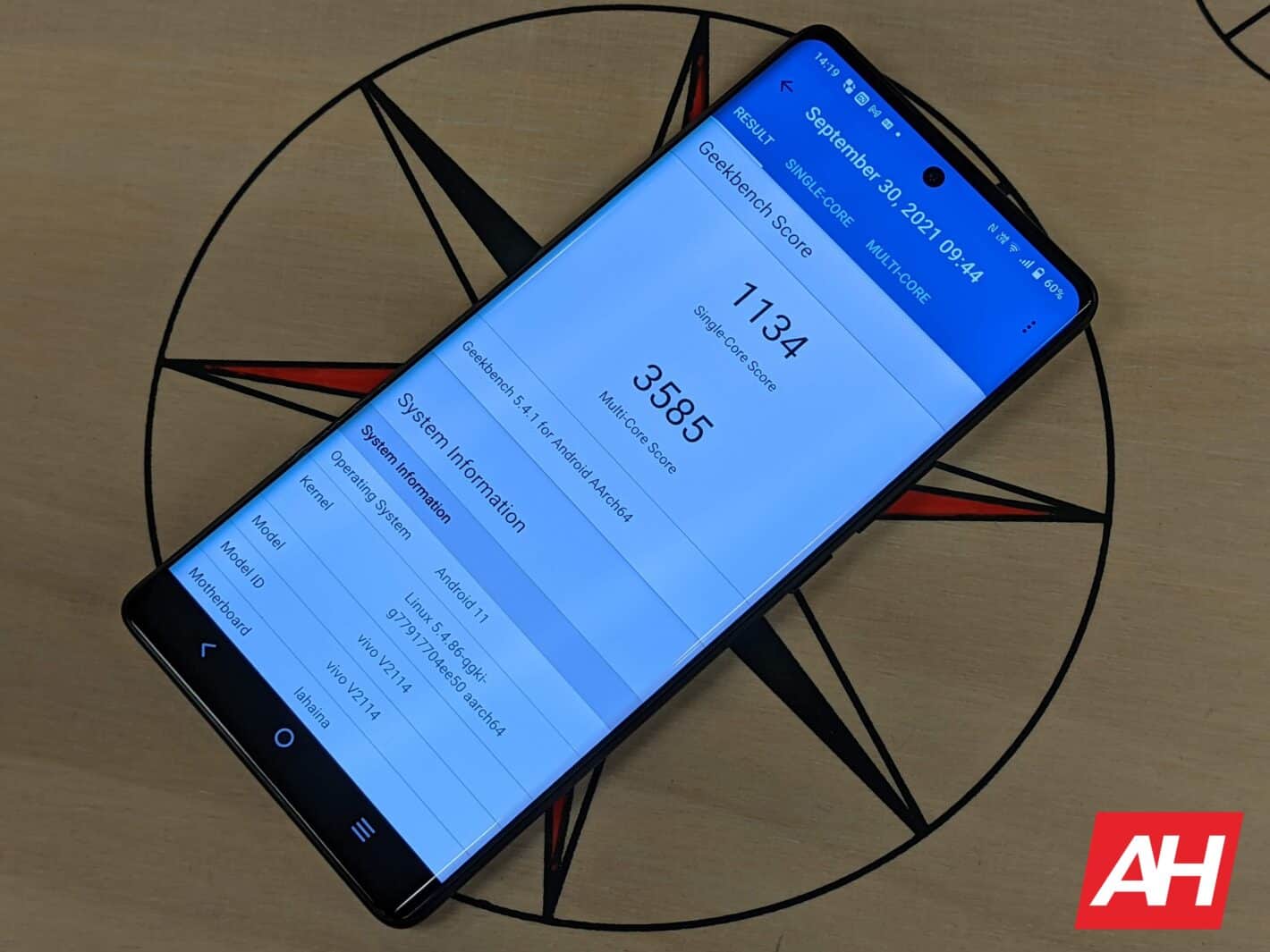
Vivo X70 Pro+ runs on the upgraded Snapdragon 888+ processor which is built on the 5nm manufacturing process. The main difference in the CPUs is the overclocked “prime” core which runs at 3.0GHz on the 888+ versus 2.84GHz on the regular Snapdragon 888. The rest of the cores stay the same along with the Adreno 660 GPU.
For some weird reason though Geekbench 5.1 scores didn’t show an improvement over the Vivo X60 Pro+ from earlier in the year for both single-core and multi-core. I always run the test with over 90% battery charge and after closing all other apps. So this anomaly on my review unit with 12GB RAM / 256 GB UFS 3.1 storage is a bit of a head-scratcher. Keep in mind that other devices with the Snapdragon 888+ also show a marginal improvement in Geekbench scores over the fairly capable Snapdragon 888.
Regardless of the Geekbench scores, you should be fine playing games for long stretches at a time on this phone without having any hiccups or heating issues at the highest refresh rates.
Vivo thankfully still has a very fast and fluid in-screen fingerprint sensor. I found it to be good in various lighting conditions. Another minor improvement I felt was in the haptic motor which now yields better feedback when typing or navigating through the different options within an app.
From a performance standpoint, I don’t think you will be disappointed with the Vivo X70 Pro+.
Software on Vivo X70 Pro Plus is the weakest aspect

The software on the X70 Pro+ is Android 11 but running a custom version of Funtouch OS. For some reason, Funtouch OS 12 is running slightly ahead of Android. But I digress, the Android security update and Play system update are both August 2021. So far so good.
But once you dive into the inner workings of Funtouch OS a few things start to pop up. Sure you still have Google Discover feed once you swipe left from the home screen similar to stock Android. And the Phone, Messages, and Contacts are all stock Google apps which is a welcome change from the prior Funtouch OS version.
There are a lot of divergences when it comes to the quick settings drop-down and the overall settings menu when compared to stock Android. Not all of these differences are a bad thing. For example, Dynamic effects is a fun setting area to explore to set up your X70 Pro+ to be unique to your mood or personality. Another change is that swiping left and right to go back and forward is now fixed in gesture navigation.
Funtouch OS requires a bit more fine-tuning
But along with the improvements, there are still bugs. In YouTube for example you cannot operate the app in landscape mode the way you do on a Pixel phone. You need to revert back to portrait mode to change video resolution or pause the video. For some reason, the only control available is the slider for rewind or fast forward. I hope that this gets fixed in a future software update.
Another thing that carries over is an annoyingly high number of apps/services that require you to agree to the terms and conditions to use them on the X70 Pro+. Again I am going to chalk this to the smartphone being built for the Indian market. Luckily, I did not any prompts to install apps from the V-Appstore versus Google Play this time around, so that is a welcome change.
Speaking of changes, one thing that hasn’t changed is the extra apps on the device from the factory. There are about 7 of them – a slight increase from before. The silver lining is that you can uninstall every last one of them. But why should these apps be there in the first place on a device that costs this much is a bit of a head-scratcher.
And yes, you still cannot uninstall V-Appstore along with the ‘Hot Apps’ and ‘Hot Games’ folders. My suggestion is that you hide them away in the app drawer and leave it at that.
I would say that Vivo still has a bit of work cut out in terms of improving the overall software experience of Funtouch OS.
Vivo X70 Pro Plus camera review
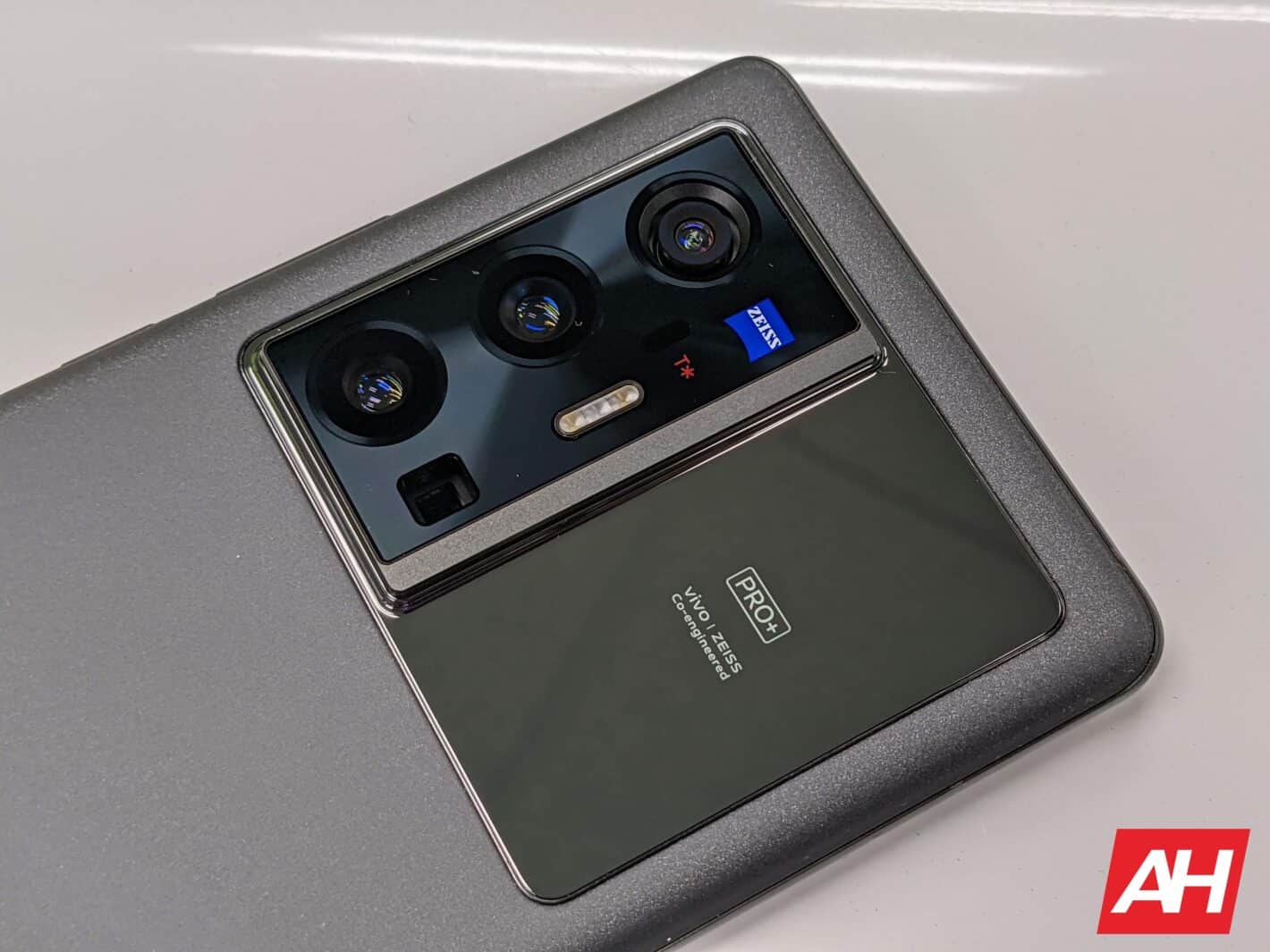
The Vivo X70 Pro+ truly lives up to the “professional photography” emblazoned on the top rail of the smartphone. The X70 Pro+ has the same 50 MP Samsung ISOCELL GN1 sensor with an f/1.57 aperture as the Vivo X60 Pro+. It still has optical image stabilization while retaining the High-Resolution mode.
Then there is the 48MP Ultrawide camera via a Sony IMX598 sensor, with a 114-degree field of view (FOV). Vivo has added gimbal control OIS to this ultrawide camera. In addition to this the ultrawide camera uses Vivo’s own 360-degree Horizon Leveling Stabilization technology for better photo and video capabilities.
Finally, there are two telephoto zoom cameras, a 12MP 2x optical zoom Sony IMX663 sensor with an f/1.6 aperture. , Then there is an 8MP 5x optical zoom periscope telephoto camera which is a carryover from the X60 Pro+. Both the telephoto zoom cameras also have OIS.
Another change is that the Zeiss T* coating is now on the entire quad-camera array instead of just the main camera. This should result in a reduction in stray light, reflections, ghosting (a gentle dig at the iPhone) according to Vivo.
And lastly, Vivo added its own custom image processing chip V1 to the X70 Pro+. This separate image processing pipeline should yield better power consumption in terms of battery life. Another advantage is that you get a much brighter image preview in low-light and night conditions.
Let’s talk a bit about the Camera App
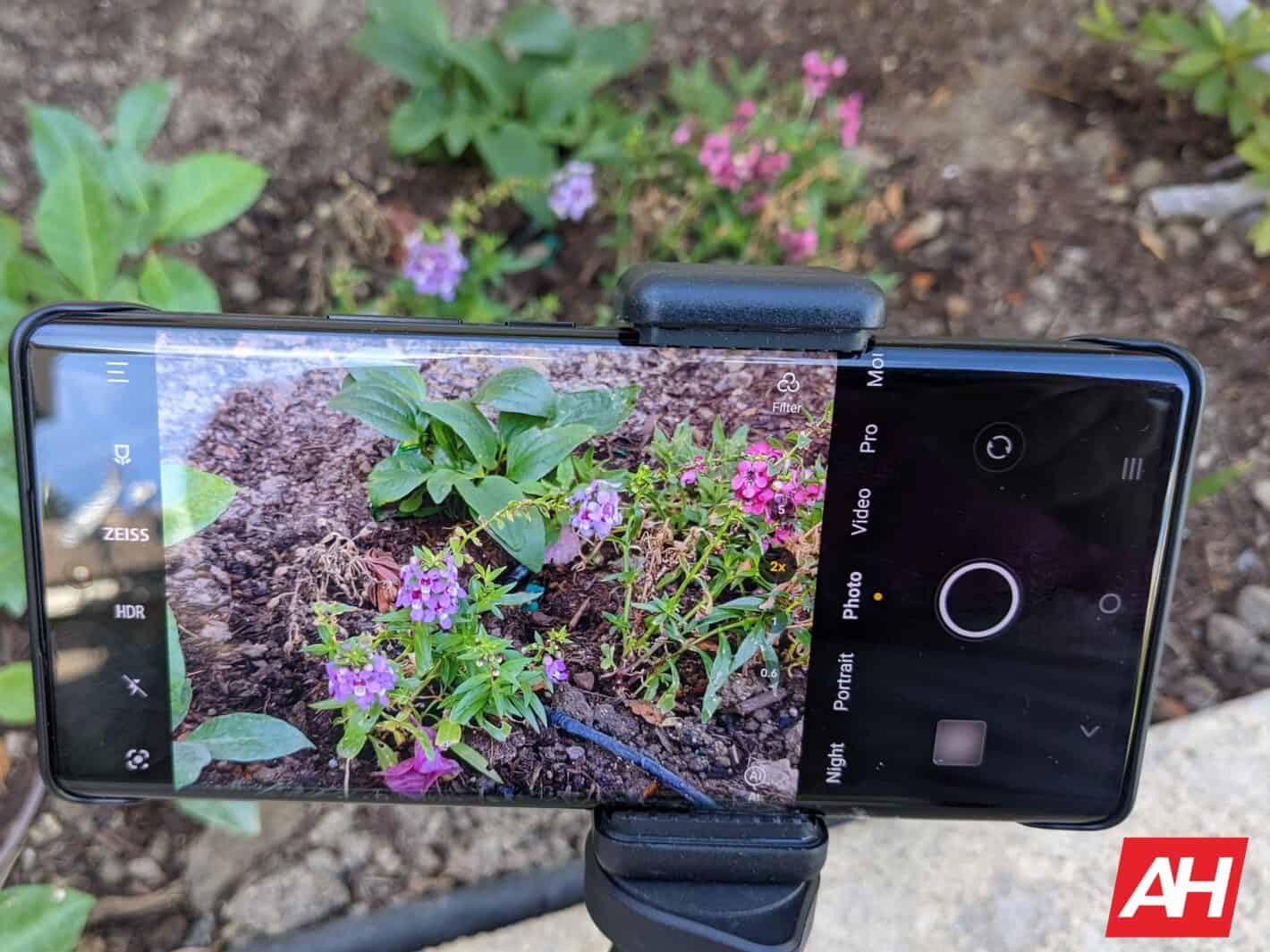
Vivo has done quite a bit of work on the hardware but let’s talk for a bit about the software specifically the camera app. The camera app on this phone is chock full of features and modes, some that you will use more often than others.
The AI mode is a hit and a miss depending on the scene. Sometimes you get pictures with a tad bit too much oversaturation and or contrast which blows out the highlights. For my review pictures, I just left the AI off.
If you’re familiar with the X60 Pro+, you will still get Long Exposure, Supermoon, Astro, Pro Sports, and Double Exposure in the “More” section. Supermoon did not disappoint this time around as well and is a fun feature to show off with or without a tripod.
Let’s talk about the minor Zeiss integration in the app. It shows up mostly in terms of bokeh effects in Portrait mode. You get Biotar, Sonnar, Planar, and Distagon. Thankfully the generic blur effect is still there which is where I suggest most folks start with.
One feature that comes in handy is the ‘Styles’ filter, especially in Night mode. You can accentuate primary color light especially with neon lights and the resulting pictures resemble those taken by a professional. Personally, I think that the Styles implementation by Vivo is even better than what the iPhone 13 Pro is touting.
Main Camera Image Quality on the Vivo X70 Pro Plus is Excellent
In pretty much any lighting condition the main camera captures excellent pictures. Colors in the pictures are vivid and punchy, tones are accurate for the most part. You might have to play with the exposure every now and then to get a bit more detail in highlights.
Also when the auto HDR kicks in you will see a slight shift in the viewfinder and that takes a bit to get used to as it is not as seamless as other devices like the Pixel. But on the flipside what you see in the viewfinder is what ends up in your photo gallery which is a great thing. This feature should allow you to frame your shots better and I think this is because of the custom V1 chip in the X70 Pro+.
Where you find having to fiddle with the exposure settings, you can choose to shoot in RAW and then tweak the images later in Lightroom for example. For the most part, the final 12.5 MP output yields better results than 50MP native due to pixel binning.
Look at the pictures in our Flickr gallery and decide if you agree.
VIVO X70 PRO PLUS CAMERA SAMPLES - FLICKR GALLERY
Ultra-Wide gimbal works in video mode but not still photography
Vivo’s improved Gimbal Stabilization works only in video mode on the ultrawide camera. It would have been nice though for low-light photography.
One thing is that the color science is accurate between the ultrawide and main cameras which is great. I have seen differences in those even on high-end Samsung devices. The ultrawide also tends to perform quite well in high contrast scenes. Low light photos are also quite acceptable but for best nighttime shots I suggest you stick with the main camera.
Telephoto pictures are good in daylight
Personally, I do not use Zoom cameras on smartphones. This is true even with a capable device such as the Vivo X70 Pro+. In my review, I found that more light gives better results in terms of detail in comparison with low-light pictures with zoom.
And yes anything past 10X is just a gimmick unless you have the S21 Ultra. The only time the higher zoom comes in handy is via a tripod and Supermoon setting. I do think that as you use the camera more and get comfortable with the results you probably will find use cases for the telephoto cameras.
Portrait mode
The new main camera with better optics and Zeiss’s T* Coating along with a wider aperture, and larger pixels means excellent portraits. Good results hold up in challenging light situations as well. And Vivo has a Night mode shortcut in the app even for portrait shots.
For portraits, the 2X zoom is the default (equaling 50mm focal length) but you can take portraits at 1X or even 5X. And you can manipulate the image in post-processing which is great. The f-stop range is f/0.95 to f/16 and f/2.0 is the default. You can tweak the bokeh range depending on your personal preference. Zeiss bokeh effects are useful in certain settings but I found myself sticking with the natural blur for the most part.
Vivo X70 Pro Plus Night mode is one of the best amongst Android smartphones
I really like the output from the main camera in night mode on the X70 Pro+. Dynamic range is great, colors are accurate and pictures come out looking closer to what the human eye can see once adjusted to the ambient light at night. You can further improve the performance by manual adjustment of exposure.
For people who love taking nighttime shots give SuperRAW a try along with the styles/filters to get a unique shot. After sunset or in colored light you get better results in my opinion.
There are so many modes that you can explore to produce images with light trails, or fireworks, or streaking star trails depending on the time of exposure. I took some nighttime pictures of the stars and moon via a tripod during my review and was quite impressed with the output.
Bottom line is that there are so many options that it will take some for you to get familiar with which one to use in a particular light setting. So play around with these so you can decide which mode to use in the city or out in nature in low-light settings.
Video is capped at 1080p with the gimbal-stabilized ultrawide
You can take incredibly stable videos using the horizontal line stabilization on the gimbal-stabilized ultrawide camera. Just note that your footage will only be HD or 1080p at 30fps. You can also cinematic movies at 24fps using the preset movie mode albeit at 1080p. On the flip side, your videos will be smooth and jitter-free. Another thing to keep in mind here is that HDR does not apply when using the ultrawide gimbal camera.
On the main camera with standard stabilization, you can shoot videos up to 8K resolution but having an actual screen to watch these on is a different story altogether. Why waste storage space on something you can’t watch? It is best to take videos in 4K with the main camera.
Battery Life is good and now there’s fast wired and wireless charging
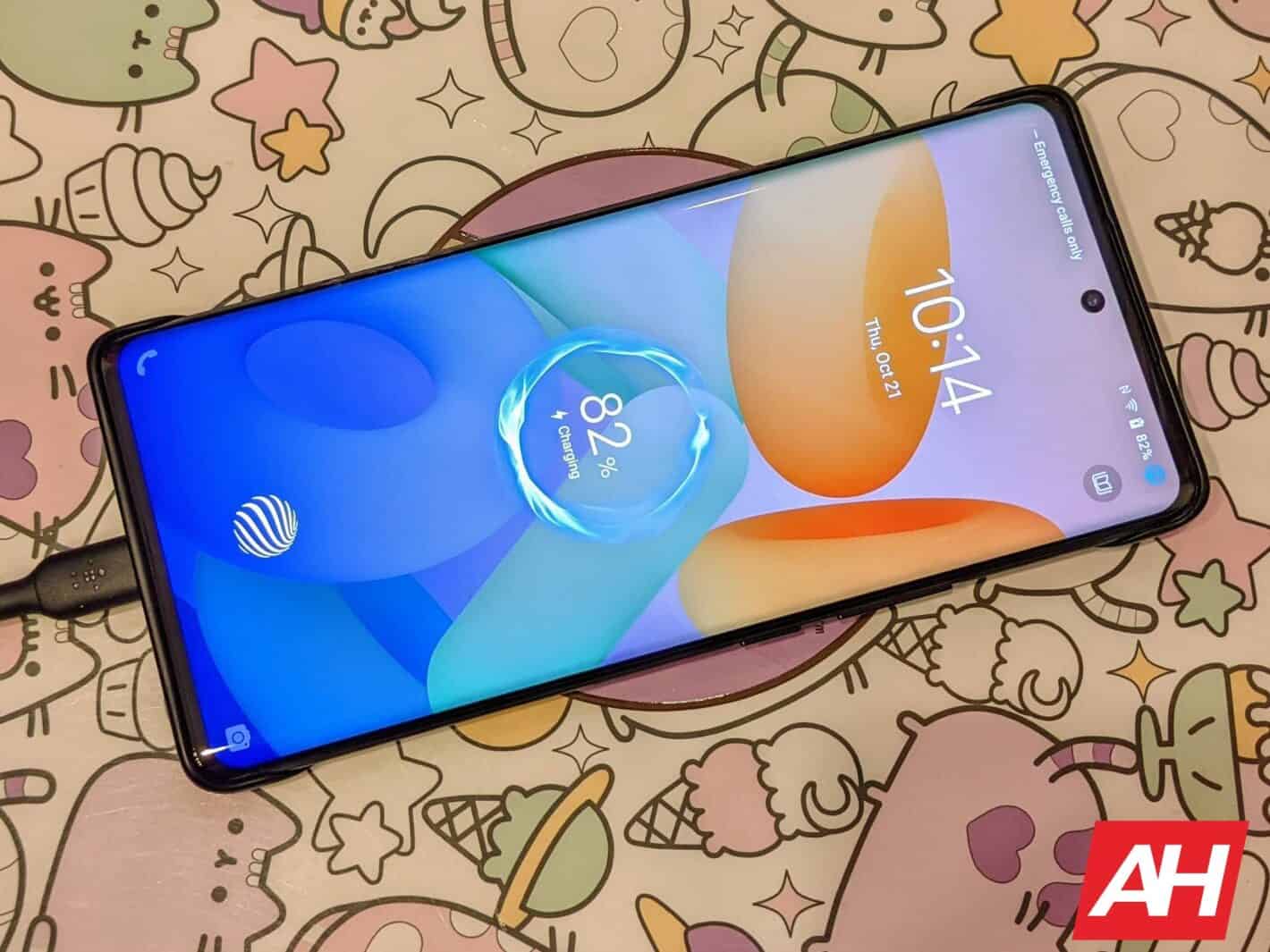
The newer X70 Pro+ gets a slight bump up to 4500 mAh in comparison with the 4200 mAh battery on the Vivo X60 Pro+. Now with a larger screen, a larger battery is a welcome change. However the new display is LTPO so this results in very good battery life on the X70 Pro+.
You can easily get through a full day’s use without any major hiccups. Unless you decide to tax the very capable camera on this smartphone or play a lot of graphics-intensive games.
During my review period, I routinely saw between 4-5 hours Screen-on-Time before wanting to get close to charging the phone. The 55W fast charging helps tremendously in topping it off quickly – just under an hour to charge it fully from zero according to Vivo. If you are hoping to charge it every other day you might have to use the device a bit less than average.
Now earlier in the year, I said that the lack of wireless charging on a device of this caliber was a glaring omission. Vivo seems to have paid attention to that feedback from the various reviewers. So on the X70 Pro+ we get 50W Fast Wireless charging support. Two things, my wireless charger is only rated to 15W so I couldn’t test the 50W wireless charging claim. Another thing to note is that the large camera module may present some challenges in terms of placing the device correctly for charging on certain wireless chargers so keep that in mind.
Fast wired and wireless charging, reverse wireless charging and a decent size battery means the X70 Pro+ gets full points in the battery life and charging department from me.
Audio quality is great on the Vivo X70 Pro Plus
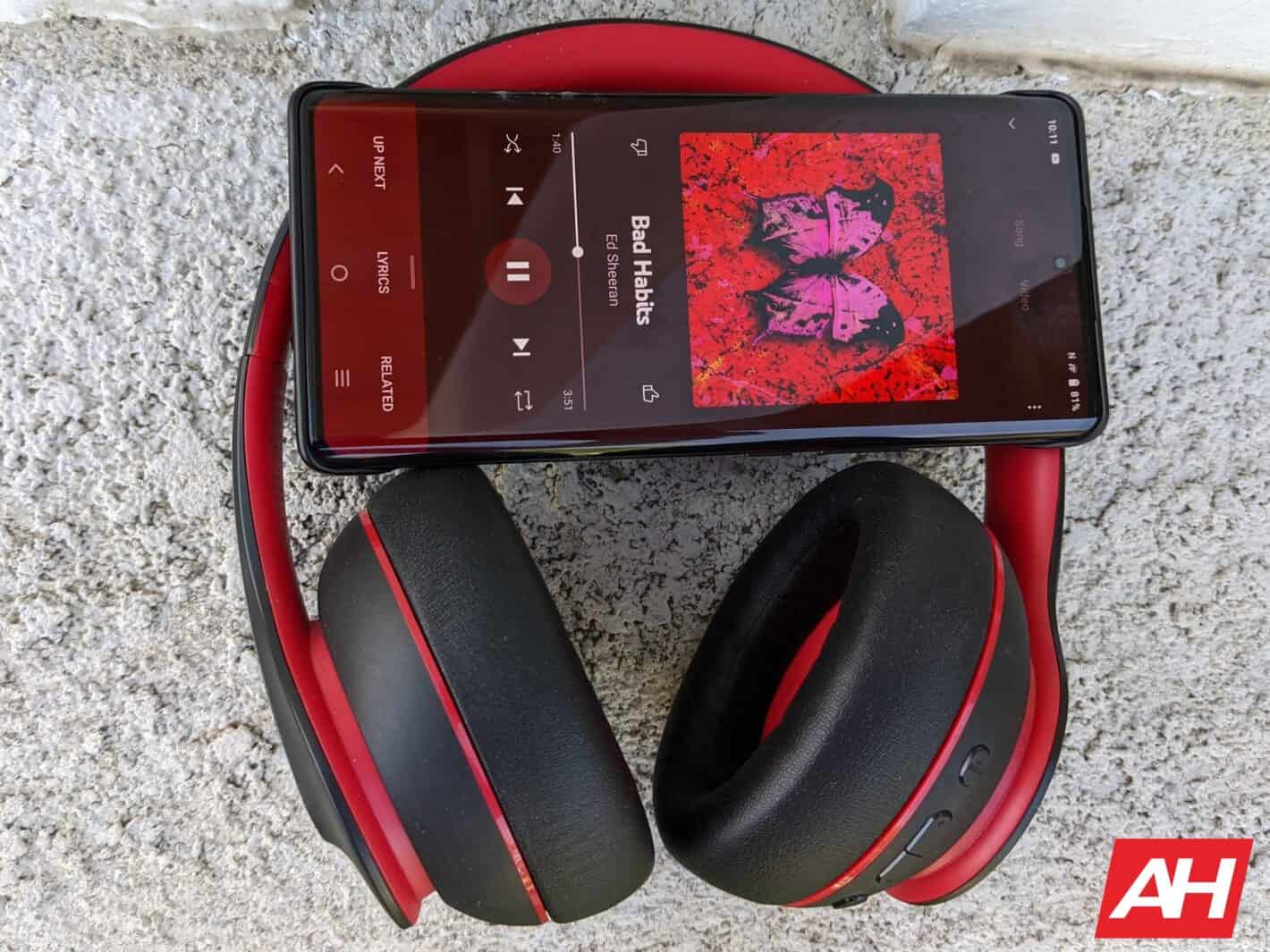
The big complaint I had about the X60 Pro+ was that it only had a single bottom-firing speaker. Well looks like Vivo attentively listening to all the complaints from the reviewers.
So this time around Vivo basically has turned the top earpiece speaker in the tiny slit into a working speaker for multimedia audio. Even though the output is not equal to that of the bottom firing speaker there is just enough oomph such that the end result is rich stereo sound. Kudos to Vivo to fixing this major glaring detail with the X70 Pro+.
As usual, there is no headphone jack but there is a 3.5mm to USB-C dongle and a pair of decent-sounding earbuds in the box. Audio quality via the USB-C port is excellent with the dongle or with a pair of good USB-C headphones.
Vivo also send me a pair of TWS earbuds which I tested via Bluetooth 5.2. For testing audio quality I used my Spotify tracklist and also YouTube music videos. Audio quality was quite good – comparable to my realme Buds Air Pro – or maybe slightly better. I think you will not be disappointed with what the X70 Pro+ has to offer in terms of audio output.
Connectivity is 4G LTE in the USA on the Vivo X70 Pro Plus
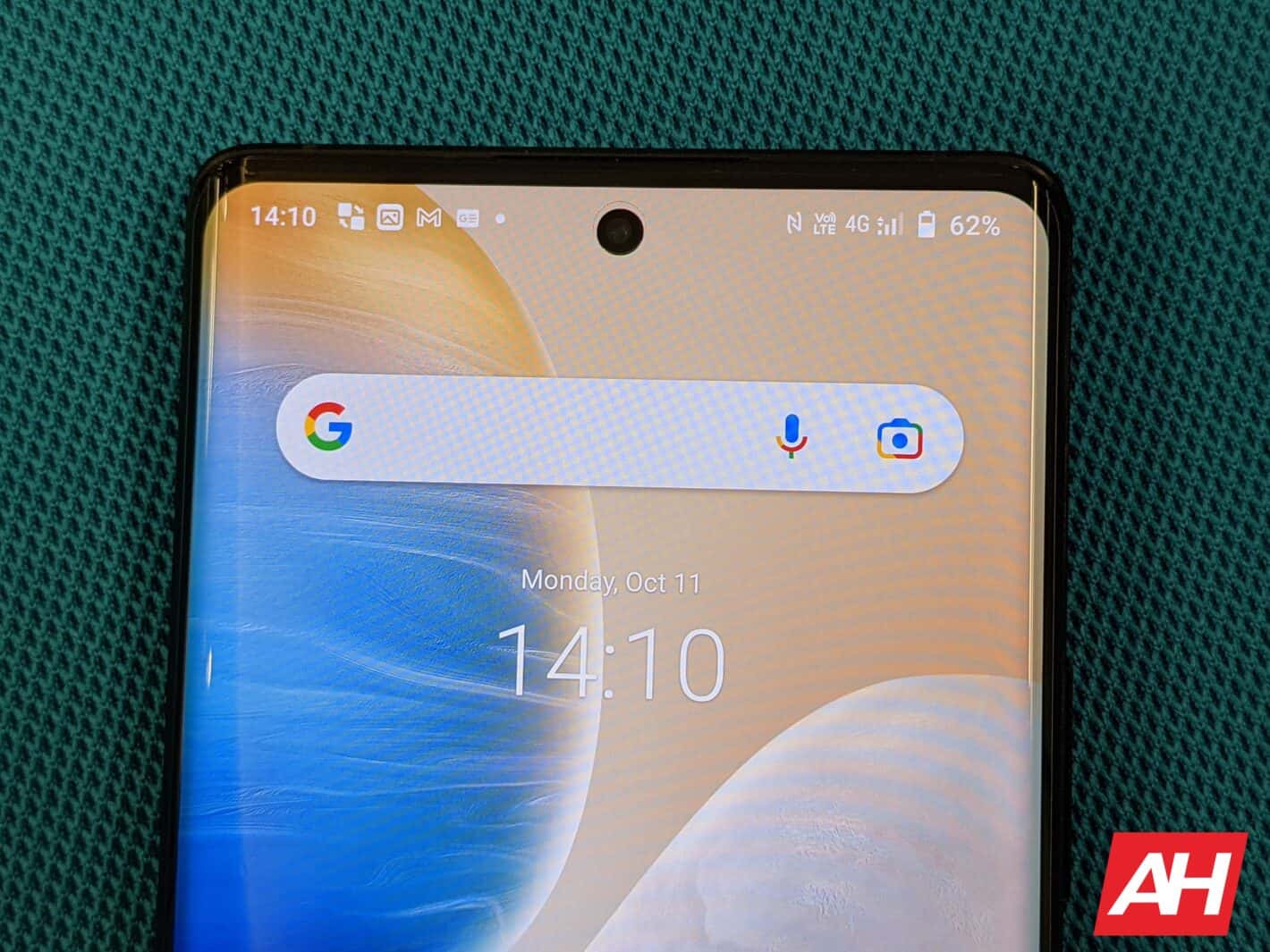
Just like the X60 Pro+ I was only able to get 4G LTE on the Vivo X70 Pro+ despite having a Snapdragon 888+ processor. My guess is the software is specific to the region (in this case India) and hence no 5G signal.
However, unlike the X60 Pro+, I consistently got VoLTE on the newer X70 Pro+. So if you are thinking of importing one for use in USA it might just work out okay on T-Mobile. I cannot say anything about how this device will perform on AT&T or Verizon.
Where I live the 5G signal is pretty lousy so I use my daily driver – a Pixel 4a 5G – on LTE and I can confirm that data download and upload speeds are similar to other USA compatible devices on the T-Mobile network in Southern California.
Call quality was excellent in either handset or speakerphone mode. There were no issues in terms of SMS/MMS or streaming music while driving around running errands. Waiting in the parking lot for pickup and catching up on YouTube subscriptions was a breeze. Pairing the phone with my car’s audio was also seamless.
Vivo didn’t mess with a successful formula, so there is NFC for using Google Pay and Nearby Share/Vivo share for sharing files. Then there is Smart Mirroring to share content from the phone to a compatible TV or monitor. Connectivity is one area where you should not have any misgivings with the Vivo X70 Pro+.
So should you buy the Vivo X70 Pro Plus?
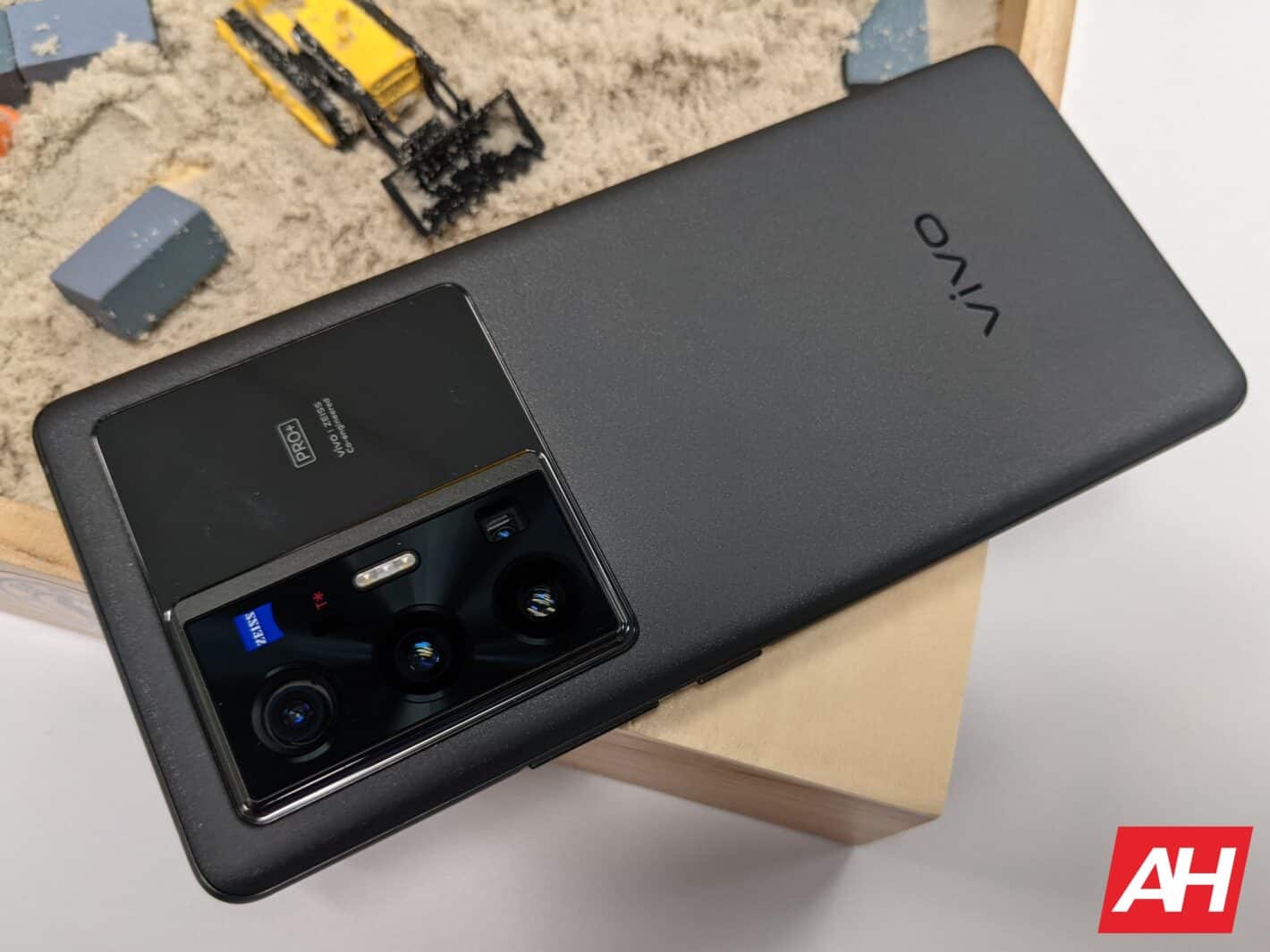
Vivo X70 Pro+ checks all the boxes in terms of a good smartphone. Design language is excellent and unique, display is top notch, processor and memory are the best on the market, battery life is very good, and there is fast wired and wireless charging.
The last main pillar of a great smartphone is the camera. The Vivo X70 Pro+ excels in this area as well. All four rear cameras produce excellent photos in a variety of different conditions. Night mode on the main camera is probably one of the best I have seen in recent times.
With the previous flagship there was no IP rating or stereo speakers or wireless charging. Vivo was listening to all the complaints and the X70 Pro+ has an IP68 rating, has great stereo speakers, and 50W wireless charging.
The retail price on the Vivo X70 Pro+ is around USD 1060 which is about $100 more than the X60 Pro+. I think that the price increase comes with a lot of good enhancements. If you are thinking of getting a top end Android smartphone and not wanting to get a Samsung or OnePlus (and its middling cameras) then the Vivo X70 Pro+ should definitely be on your shopping list. The Vivo X70 Pro+ is a genuine flagship smartphone and perhaps one of the best Android phones currently available.
 Newsletter
Newsletter

